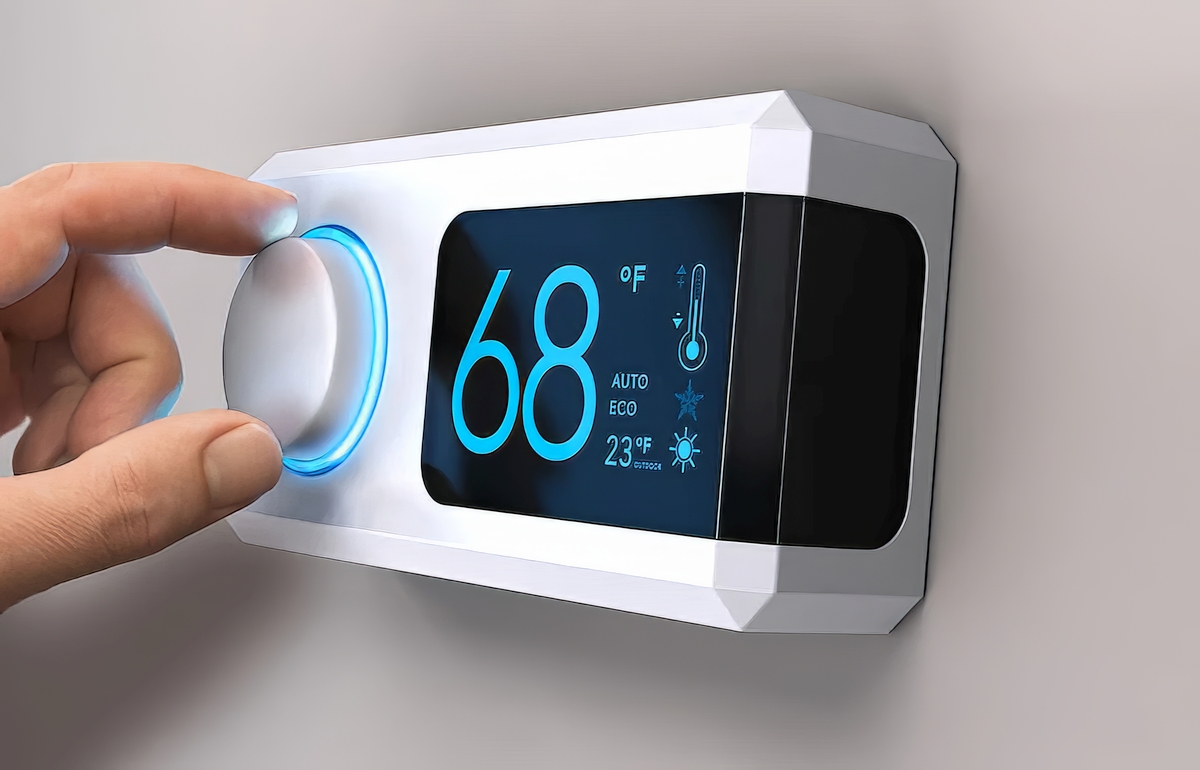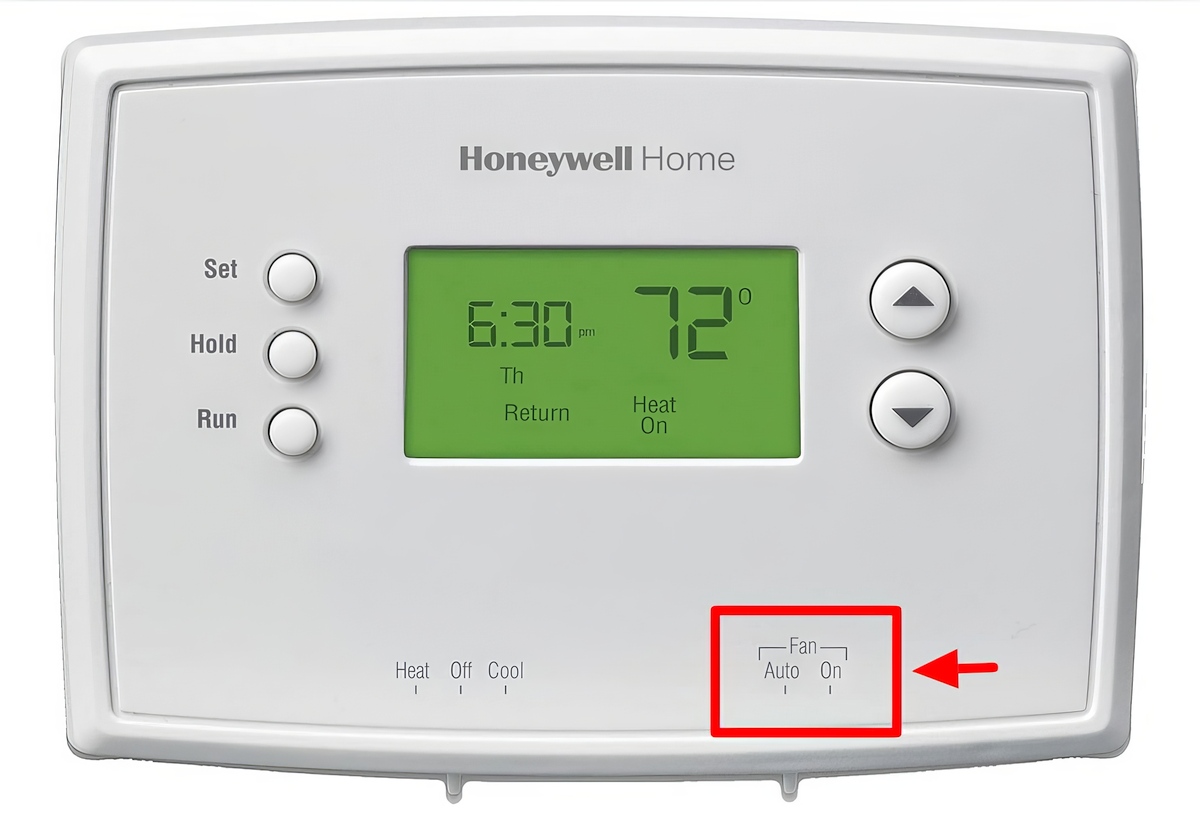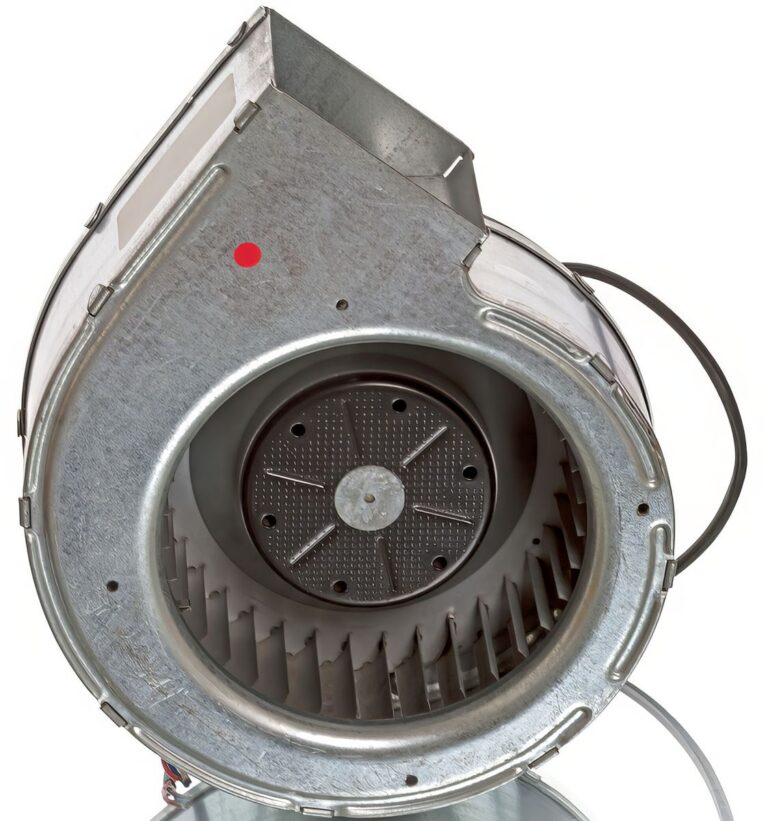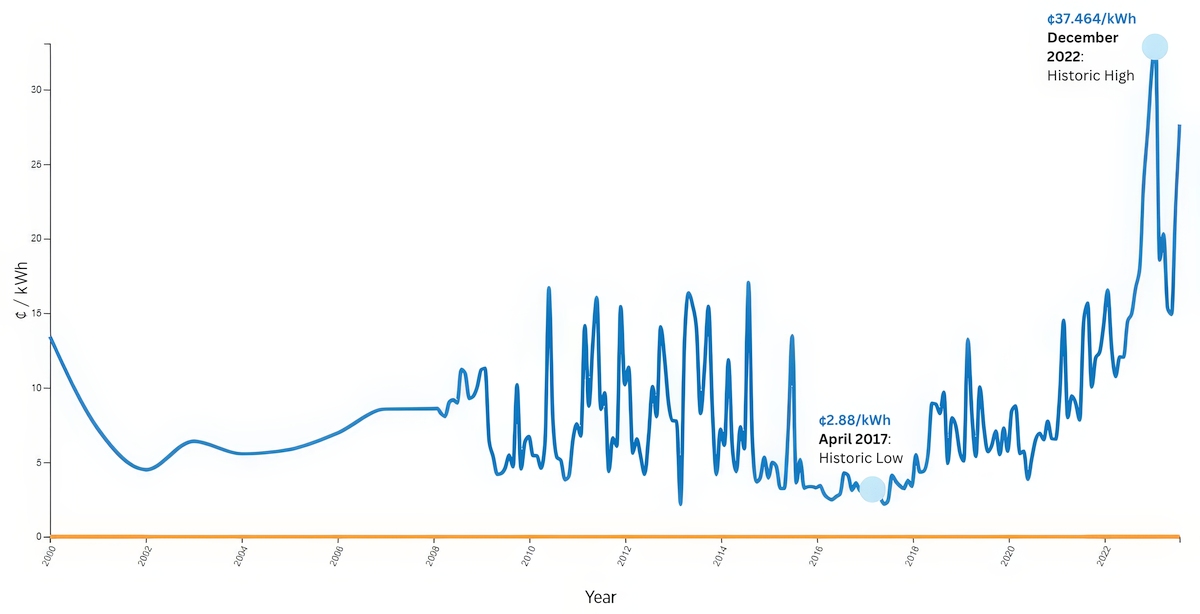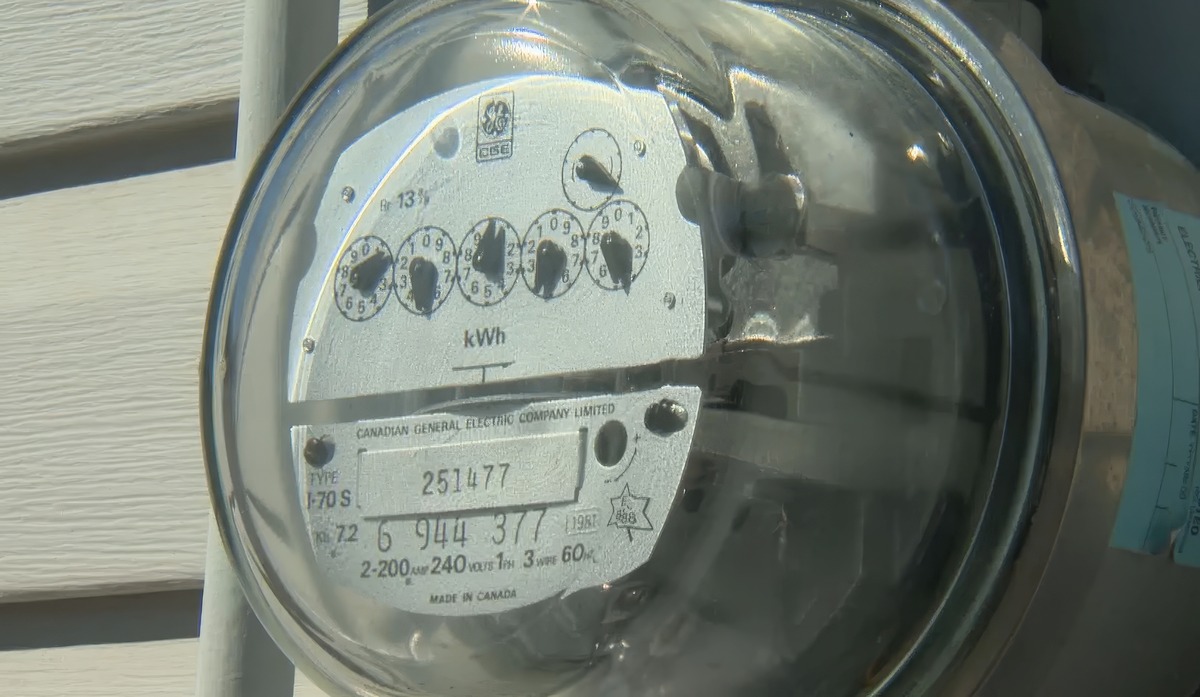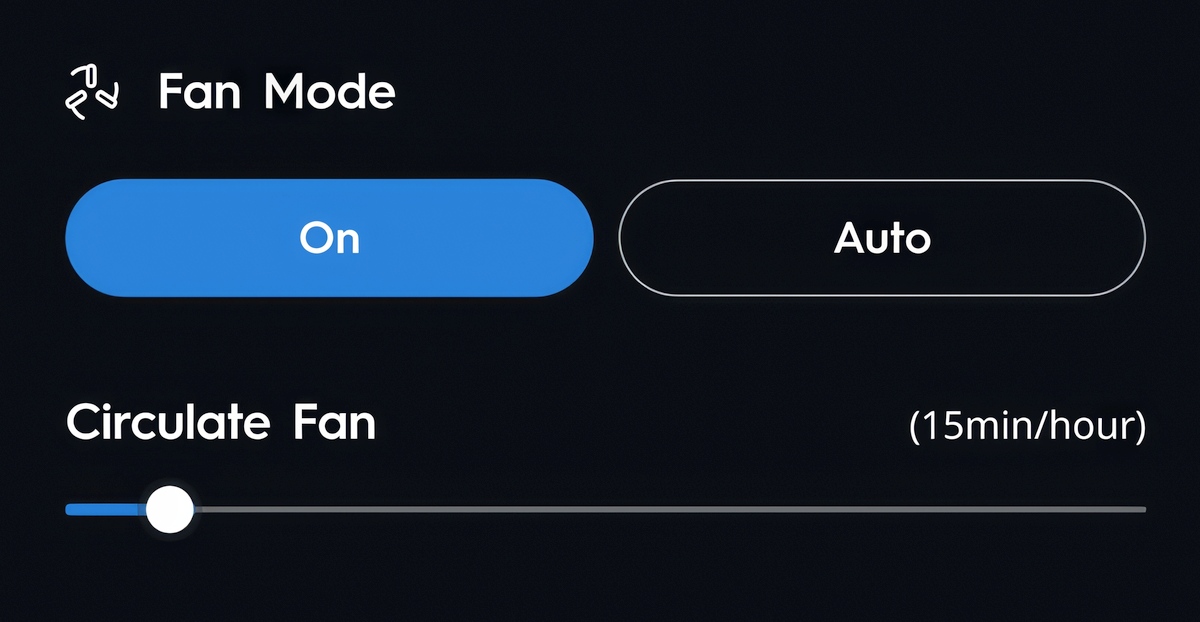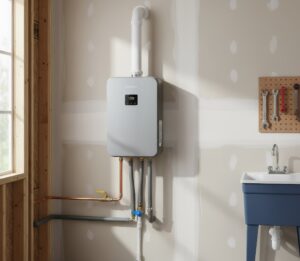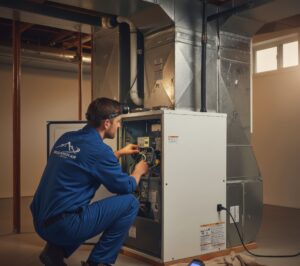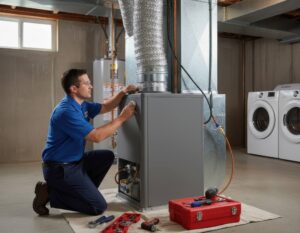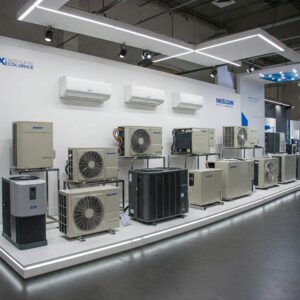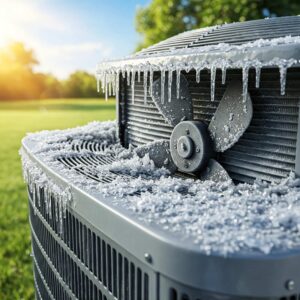Furnace fans or blowers help circulate air in HVAC systems, working with the thermostat to keep the home at a comfortable temperature and improving air quality.
As a key component of your HVAC system, it’s important to know how to use the furnace fan to maintain comfort. The two basic fan settings of ON or AUTO will also affect energy costs in the home—so, more than your family’s comfort levels are at stake.
Here’s what you need to know about whether a furnace fan increases energy costs in the home…
Does Fan on Furnace Increase Energy Costs?
Furnace fans are essential components of a furnace and they require electricity to run. Running the fan continuously requires more electricity than if it’s set to AUTO mode, increasing energy costs. However, the extent of the increase depends on factors like the fan’s efficiency and local electricity rates.
Newer, high-efficiency variable-speed fans often have a smaller impact on the monthly energy bill than older models.
Generally speaking, it’s best to maintain an AUTO setting for blower fans on HVAC systems, especially if they use older, inefficient equipment.
MAKE THE RIGHT HEATING & COOLING DECISIONS…
For over two decades, Alberta Mountain Air has helped Calgarians solve heating and cooling problems and maintain ideal comfort levels. Get in touch online for a quote.
What Does the Furnace Fan Do?
A furnace fan circulates heated air throughout the home’s ducting and into the rooms.
Without a furnace fan blowing during the device’s heating cycle, warm air would not distribute efficiently, consistently, and evenly through the ducting and out through the room vents. Some areas of the home would likely remain significantly colder than others.

Note that a furnace fan does not bring in outside air but circulates air already in the home so it can become dirty, clogged, and less efficient unless you change the furnace’s air filters regularly.
Understanding Furnace Fan Settings
The two settings on your thermostat for the furnace fan are:
- AUTO: the fan runs only as needed, during the heating cycle (or cooling cycle for air conditioning).
- ON: the fan runs continuously, even when the furnace is not heating.
When you set your fan to ON, it runs as long as the furnace is active, regardless of whether it is heating.
The AUTO setting is considered more energy-efficient since the fan is off when the system isn’t actively heating or cooling. It’s rarely necessary to keep the fan in ON mode unless there’s a specific reason why consistent airflow is required even when the furnace is not actively heating (more about this below).
How Much Energy Does a Furnace Fan Use?
This is best explained in the following table:
| ON Mode | AUTO Mode | |
|---|---|---|
| Standard fan energy requirement (Watts per hour) | 400 | 400 |
| Hours run per month | 700 | 300 |
| Watts used per month | 280,000 | 120,000 |
| Average cost per kWh (Alberta) | $0.12 | $0.12 |
| Average kWh used per month | 280 | 120 |
| Average monthly cost to run the fan | $33.60 | $14.40 |
| Average annual cost to run the fan | $403.20 | $172.80 |
The bottom line? Running the furnace fan in AUTO mode rather than ON mode for a year can save around $230.
But this isn’t the whole story as other factors impact the energy usage and cost of furnace blowers in addition to the basic factors considered in the above calculations.
Factors that Impact a Furnace Blower’s Energy Usage and Costs
While running the fan continuously in any furnace will increase energy usage and monthly costs, the following factors impact these costs…
Fan Type and Efficiency
The type of fan motor in your furnace will influence its efficiency and energy usage. Older, more traditional furnaces use standard blower motors, as in the calculation above.
However, modern, energy-efficient furnaces with variable-speed motors adjust their speed based on demand and use much less electricity to run their components. Electronically commutated motors (ECMs) are more efficient and are often used in new furnaces—or can be retrofitted.
Ultimately, the difference between the energy costs of modern furnaces in AUTO and ON mode is much less with energy-efficient furnaces than with traditional furnaces.
While a standard furnace fan motor uses around 400 watts per hour, a high-efficiency variable-speed model may use only around 75 watts per hour.
Furnace size and insulation also affect running costs. Smaller furnaces also use less power to run their fans while well-insulated homes generally need less energy to stay warm.
Local Electricity Rates
Over 80 percent of homes in Alberta use natural gas-powered forced-air furnaces as their primary heating source in central HVAC systems.
However, the costs of running the electrical components such as the blower fan depend on local electricity rates.
The average cost of electricity varies with location and the local rates offered by different energy suppliers. An average electricity cost may be around 12 cents per kWh but this can vary from region to region and year to year. For instance, in 2017, electricity prices in Alberta were around 2.88 cents per kWh while in December 2022, rates reached 37.464 cents/kWh, a historic high.
When electricity rates are at their highest, every little saving counts so switching the fan to AUTO is often recommended.
Frequency and Duration of Furnace Use
It’s no surprise that the more you use the furnace, the greater the energy costs. If a traditional furnace runs all the time in ON mode with the blower fan, this will maximize energy usage.
Reducing the usage either by running the furnace less, adjusting the thermostat or switching the blower from ON to AUTO should have a noticeable impact on energy usage and monthly bills.

Pros and Cons of Running the Fan Continuously
While nobody wants higher bills, it’s not all bad news if your fan runs continuously. In some scenarios, it can be beneficial. So, let’s weigh up the main pros and cons…
Pros of Keeping the Furnace Fan On
- Improved air circulation as the fan is always distributing air to all parts of the home, potentially improving comfort levels for the family.
- Prevention of hot and cold spots in the home—more even heating throughout all parts of the home.
- Potential for better indoor air quality with fewer dust particles and allergens circulating, which can be better for allergy sufferers (but this is only the case if you clean or change the furnace filter regularly).
- Less stress and wear and tear on the fan from frequent starting and stopping, potentially extending its lifespan and reducing furnace repair costs.
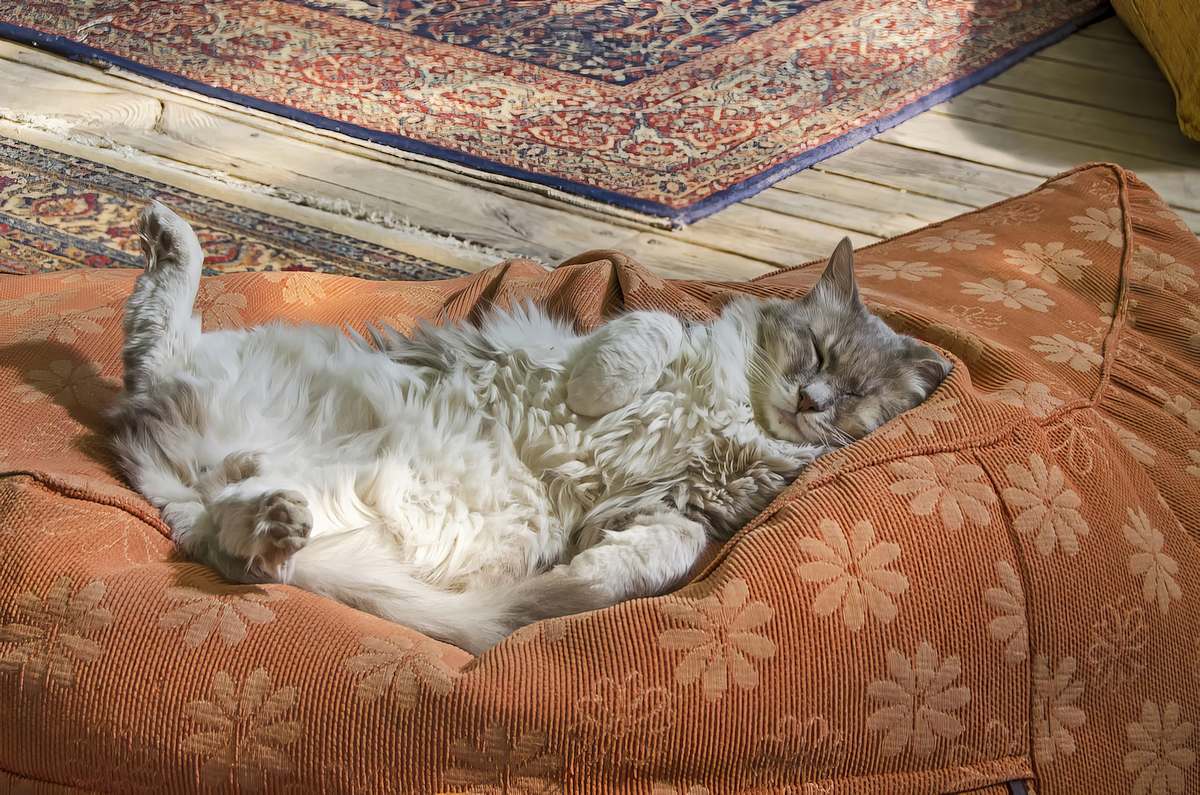
Cons of Keeping the Furnace Fan On
- It may cost hundreds of dollars per year to keep the fan running continuously, especially in traditional gas furnaces.
- Your furnace filter will clog up quicker, so it will need to be cleaned or changed more frequently—or it may be overworked and use excessive energy.
- It may increase humidity in the home, as condensation cannot drain from treated air like when the fan is in AUTO mode.
- It’s usually unnecessary to keep the furnace fan on all the time, especially for older models with single-speed fans.
Energy-Saving Tips for Furnace Fan Usage
Furnace costs are high enough in Calgary without adding to them. If you want to save energy usage and lower monthly electricity bills, try these tips:
- Retrofit your furnace with an energy-efficient motor (ECM).
- Clean or replace air filters regularly to maintain efficiency.
- Book regular furnace maintenance to optimize performance.
- Use a smart thermostat for better temperature and energy control.
- Weigh the benefits of continuous fan operation against energy costs.

FAQs
Most but not all blower motors can be set to ON mode or run continuously. If your fan isn’t rated for continuous use but you still run it non-stop, it will likely need replacing ahead of time.
You may qualify for assistance from the Canadian government by retrofitting your home and installing high-efficiency HVAC equipment. The Canada Greener Homes Loan program is a federal program that provides low-interest loans for homeowners who upgrade equipment. Regional programs are also offered. It’s best to check with your HVAC supplier about energy rebates currently available in Alberta.
This question—and many other furnace problems—is answered in our post on AC troubleshooting.
This is an option for some newer, high-efficiency furnace installations with variable-speed blowers. You can set the fan to turn on for a certain amount of time every hour, providing the best of both worlds, with the blower automatically running at different speeds, conserving energy and keeping bills low while increasing comfort levels.
Keep Energy Costs Manageable With a High-Efficiency Furnace
Generally, keeping the furnace fan set to AUTO is the most energy-efficient option. There are some benefits to running the fan constantly but it will increase energy costs—how much depends on the type of fan/furnace, energy rates, and how much the furnace is used.
To find the perfect balance of comfort, air quality, and energy efficiency, discuss your options with a furnace professional at Alberta Mountain Air. Our HVAC professionals are SAIT-certified and can help you make the right heating and cooling decisions. So, if you’re in Calgary and considering your heating options, contact us online.
